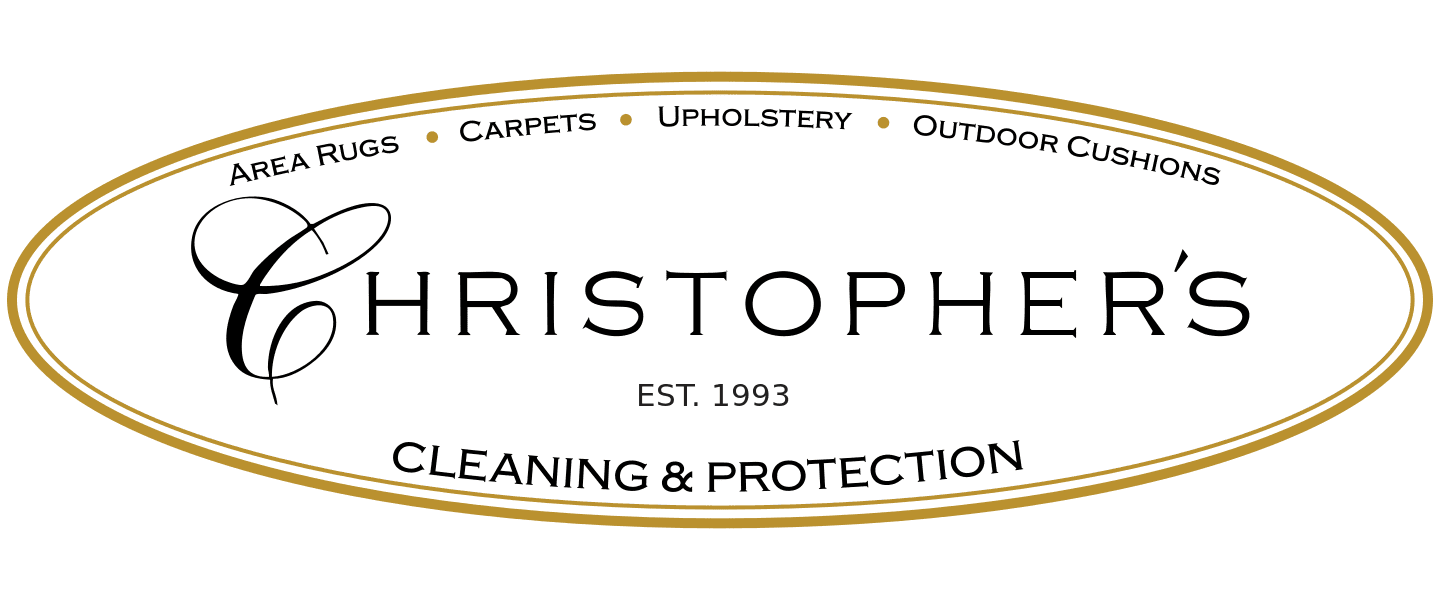Upholstery Cleaning FAQs
Will the fabric protection be removed by cleaning?
Yes. Cleaning will substantially diminish the repellent properties of a topically applied fabric protectant. Christopher's suggests that you have it reapplied. Our specialist can reapply fabric protection immediately after cleaning adding no additional dry time or inconvenience to your schedule.
Will you move furniture so you can clean the whole piece?
We move all readily moveable furniture, lamps and objects. We do not move semi-permanent or permanent furniture, or items exceptionally large, heavy, fragile or valuable. This is standard procedure as dictated to us by our industry's insurance carriers.
What if a spot comes back?
The term for this occurrence is wicking. A spot that initially appeared to have been completely removed during cleaning but reappears upon drying or over a several day/week period of time is caused when the spotting substance is residing in the padding or backing and subsequently wicks out to the surface as it dries. Christopher's will be happy to come back one time to re-clean the spot at no additional charge. If more than one revisit is needed, our standard cleaning rates will apply.
Do you dry clean?
No. Generally, dry cleaning is the use of powder or carbonated foam that is placed on the furniture and then vacuumed out. There is great debate as to whether dry cleaning is as effective as hot-water extraction. Christopher's has investigated all methods of cleaning and has determined that the time-tested water extraction method yields the best and most dependable results for our clients.
How often should I fully clean my upholstery?
Ideally, upholstery cleaning should be kept to a minimum but a light overall cleaning every year or so for less commonly used pieces goes a long way to preventing premature replacement. For more regularly used upholstery, you should plan on cleaning it at least annually to maintain the aesthetic well being of your furniture investment. Note that it is not uncommon to clean breakfast nooks and the like on a quarterly or semi-annual basis.
What is the difference between spot cleaning and full cleaning?
Spot cleaning is localized for a specific incident. For example, a pet accident, a spilled glass of wine, or muddy foot prints (if they are contained within a few feet). Full cleaning is the complete cleaning of a piece of furniture or a carpet. Sometimes there are so many spots that there is no choice but to clean an entire piece of upholstery or carpet. Occasionally when called to spot clean a specific incident, we are forced to do full general cleaning rather than leave behind an obvious 'clean spot'. This scenario is an undeniable indicator that the carpet or furniture is overdue for cleaning. When this occurs, regular cleaning rates apply.
After my upholstery is clean, how do I keep it that way?
Make sure your protective treatment is current; use your upholstery brush regularly; vacuum at least twice weekly; have a spot cleaning plan and supplies on hand, and finally stick to your cleaning cycle so that the upholstery never looks unclean.
Can pet stains be removed?
Often yes, but time is of the essence. The longer a stain resides on upholstery the less likely the chance for 100% removal.
What method do you use for upholstery cleaning?
Water extraction is our primary cleaning method. It is the by far the most common method used for cleaning carpet and upholstery. The up side of using water is that it does the best job. The down side is that using water presents risks such as discoloration and shrinkage. This is where experience, training and equipment come in to play. However, there are alternative methods that use dry chemical or foam instead of water. These methods decrease the risks that come with water extraction; but it is our opinion that without the rinsing action of water, it is impossible to truly clean an item. Imagine washing your clothes or hair with a foam cleanser -- without any rinsing action (water), would they truly be clean?
How long does it take upholstery to dry after cleaning?
We always like to err on the side of caution and say safe drying expectation is 6-8 hours. Could it be less? Yes. Could it be more? Yes (although rarely). Furthermore, fans (including ceiling fans) will decrease drying time.
